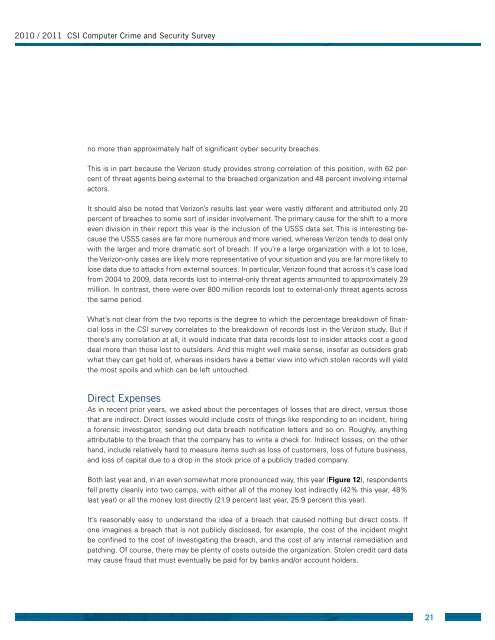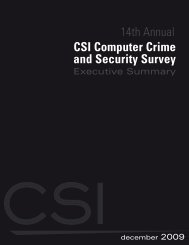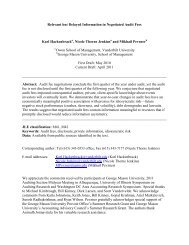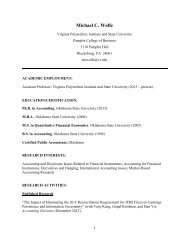2010/2011 Computer CrIme and SeCurIty Survey - Gatton College ...
2010/2011 Computer CrIme and SeCurIty Survey - Gatton College ...
2010/2011 Computer CrIme and SeCurIty Survey - Gatton College ...
Create successful ePaper yourself
Turn your PDF publications into a flip-book with our unique Google optimized e-Paper software.
<strong>2010</strong> / <strong>2011</strong> CSI <strong>Computer</strong> Crime <strong>and</strong> Security <strong>Survey</strong>no more than approximately half of significant cyber security breaches.This is in part because the Verizon study provides strong correlation of this position, with 62 percentof threat agents being external to the breached organization <strong>and</strong> 48 percent involving internalactors.It should also be noted that Verizon’s results last year were vastly different <strong>and</strong> attributed only 20percent of breaches to some sort of insider involvement. The primary cause for the shift to a moreeven division in their report this year is the inclusion of the USSS data set. This is interesting becausethe USSS cases are far more numerous <strong>and</strong> more varied, whereas Verizon tends to deal onlywith the larger <strong>and</strong> more dramatic sort of breach. If you’re a large organization with a lot to lose,the Verizon-only cases are likely more representative of your situation <strong>and</strong> you are far more likely tolose data due to attacks from external sources. In particular, Verizon found that across it’s case loadfrom 2004 to 2009, data records lost to internal-only threat agents amounted to approximately 29million. In contrast, there were over 800 million records lost to external-only threat agents acrossthe same period.What’s not clear from the two reports is the degree to which the percentage breakdown of financialloss in the CSI survey correlates to the breakdown of records lost in the Verizon study. But ifthere’s any correlation at all, it would indicate that data records lost to insider attacks cost a gooddeal more than those lost to outsiders. And this might well make sense, insofar as outsiders grabwhat they can get hold of, whereas insiders have a better view into which stolen records will yieldthe most spoils <strong>and</strong> which can be left untouched.Direct ExpensesAs in recent prior years, we asked about the percentages of losses that are direct, versus thosethat are indirect. Direct losses would include costs of things like responding to an incident, hiringa forensic investigator, sending out data breach notification letters <strong>and</strong> so on. Roughly, anythingattributable to the breach that the company has to write a check for. Indirect losses, on the otherh<strong>and</strong>, include relatively hard to measure items such as loss of customers, loss of future business,<strong>and</strong> loss of capital due to a drop in the stock price of a publicly traded company.Both last year <strong>and</strong>, in an even somewhat more pronounced way, this year (Figure 12), respondentsfell pretty cleanly into two camps, with either all of the money lost indirectly (42% this year, 48%last year) or all the money lost directly (21.9 percent last year, 25.9 percent this year).It’s reasonably easy to underst<strong>and</strong> the idea of a breach that caused nothing but direct costs. Ifone imagines a breach that is not publicly disclosed, for example, the cost of the incident mightbe confined to the cost of investigating the breach, <strong>and</strong> the cost of any internal remediation <strong>and</strong>patching. Of course, there may be plenty of costs outside the organization. Stolen credit card datamay cause fraud that must eventually be paid for by banks <strong>and</strong>/or account holders.21











